Ever run into something called Intel Smart Sound Technology (Intel SST) while tinkering with your Windows 11 audio settings or device manager? You're not alone. While it might sound like something out of a sci-fi flick, it plays a big role in your device's sound system—especially if you're using voice commands or a modern laptop.
In this guide, we’re diving deep into everything you need to know about the Intel Smart Sound Technology Driver, how it works, how to install or update it, and what to do if it misbehaves.
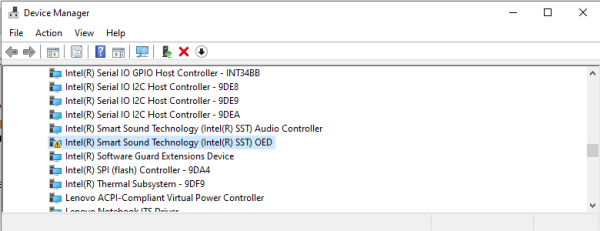
What Is Intel Smart Sound Technology (ISST)?
The Intel SST driver powers the audio DSP (Digital Signal Processor) built into many Intel processors. It handles low-power audio tasks like:
Voice recognition
Noise cancellation
Wake-on-voice features
Instead of using your CPU for all audio processing, Intel SST offloads those tasks, which means better battery life and quicker response times for things like Cortana or Google Assistant.
Benefits of Intel SST
Lower CPU usage during audio processing
Faster voice command recognition
Better support for smart assistants
Improved power efficiency
Why It’s Important for Windows 11
Windows 11 relies heavily on modern, integrated technologies. Intel SST ensures seamless compatibility with audio input/output devices and voice features. It’s practically baked into the OS experience for newer laptops.
Common Intel Smart Sound Technology Drivers
To ensure compatibility and performance, it's important to install or update all related drivers, including:
Intel Smart Sound Technology Audio Controller Driver
Intel Smart Sound Technology for USB Audio Driver (Windows 11)
Intel Smart Sound Technology for Digital Microphone Driver
Intel Smart Sound Technology OED Driver
These drivers work together to ensure seamless audio processing on your device.
Intel Smart Sound Technology Driver on Windows 11
Compatibility with Windows 11
Windows 11 fully supports Intel Smart Sound Technology, but only with the correct Intel SST driver version. If you're missing this driver or using an outdated one, expect things like:
Audio not working
Microphone issues
Voice assistant failures
How It Impacts System Performance
Think of Intel SST like a co-pilot for your computer's audio system. It takes the load off your CPU, especially when running voice apps or audio software in the background.
Common Use Cases
Running Cortana, Alexa, or Google Assistant
Activating devices with "Hey Cortana" even when the screen is off
Noise filtering on video calls or recordings
Download Intel Smart Sound Technology Driver for Windows 11
Here’s how to safely download and install the Intel Smart Sound Technology driver:
Method 1: Download from Intel’s Official Website
If you prefer downloading drivers directly from the source, Intel’s official website is the most reliable option. This method ensures you get the latest and most compatible version of the Intel Smart Sound Technology driver, specifically tailored for your hardware and Windows 11 system.
Visit the Intel Download Center.
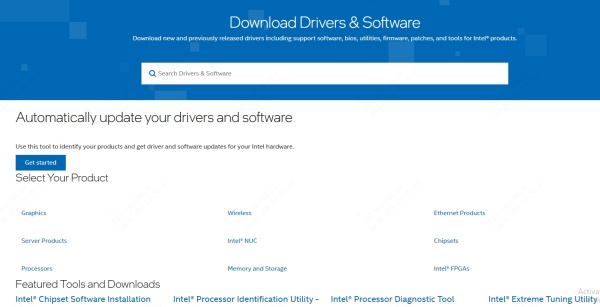
In the search bar, type: Intel Smart Sound Technology driver.
Filter results for Windows 11, then select the latest version available.
Click Download, then run the setup file.
Follow the on-screen instructions to install the driver.
Note: Always match the driver with your CPU generation and chipset (e.g., Intel 10th Gen, 11th Gen, etc.).
Method 2: Update via Device Manager
For users who want a quicker, built-in way to update their drivers, Windows 11 provides a convenient solution through Device Manager. This method uses Microsoft's driver database to search and install the most suitable Intel Smart Sound Technology driver without requiring a manual download.
Press Windows + X and select Device Manager.
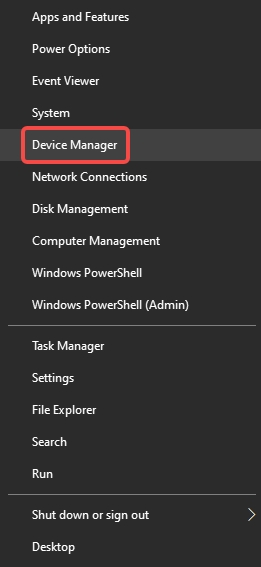
Expand System Devices.

Right-click Intel Smart Sound Technology (Intel SST) Audio Controller.
Click Update Driver > Search automatically for drivers.
Windows will search and install the best version available.
Method 3: Use a Trusted Driver Update Tool
If you’re unsure which driver to install or want a hassle-free, automated solution, a third-party tool like Driver Talent X can help. This method is best suited for less technical users or those managing multiple driver issues. The software automatically detects outdated or missing Intel Smart Sound Technology drivers, downloads the correct version, and installs them with minimal user input.
Key Features of Driver Talent X
Automatically scans your system
Detects missing or outdated drivers
Downloads and installs the correct Intel Smart Sound Technology driver
Ensures compatibility with your Windows 11 version
Steps to Use Driver Talent X:
Download and install Driver Talent X from the official website.
Launch the software and click Scan.
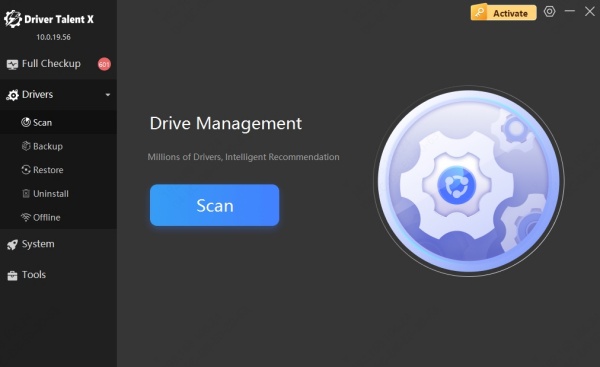
Locate the Intel Smart Sound Technology driver in the list.
Click Upgrade.
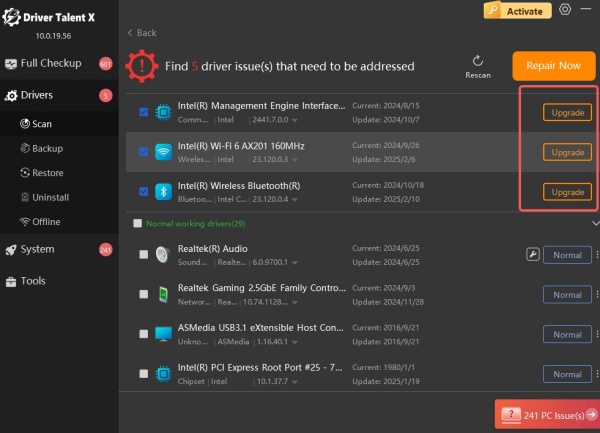
Restart your computer.
Intel Smart Sound Technology for Digital Microphone Driver
For laptops with integrated microphone arrays, especially those used in video conferencing and speech-to-text applications, the Intel Smart Sound Technology for Digital Microphone driver is vital.
If this component is missing or outdated, your microphone may:
Stop working
Not be detected
Capture distorted sound
To install:
Open Device Manager

Expand Audio inputs and outputs
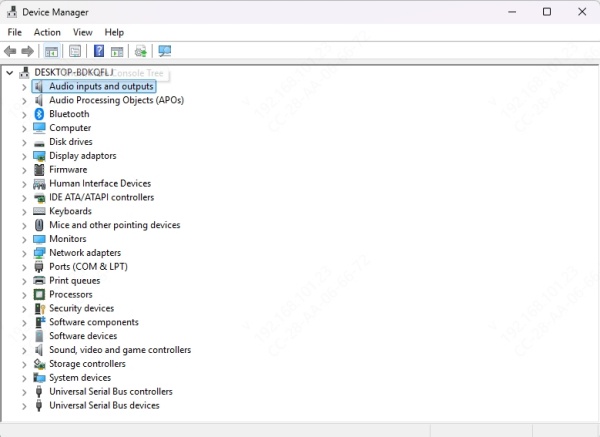
Right-click your Digital Microphone Array
Choose Update driver or manually install it using Intel’s bundle
Intel Smart Sound Technology OED Driver Explained
OED (Offload Engine Driver) is part of the Intel Smart Sound framework that offloads audio tasks from the CPU to the DSP, enhancing performance and power efficiency. If you're getting errors like "No Audio Output Device is installed" or Code 10 on SST components, the Intel Smart Sound Technology OED driver is likely corrupted or missing.
Fix it by:
Downloading the latest version from the Intel site
Installing through Device Manager under System Devices > Intel Smart Sound Technology OED
Rebooting your system
Intel Smart Sound Technology for USB Audio Driver Windows 11
For external microphones, USB headsets, and audio interfaces, Windows 11 requires the Intel Smart Sound Technology USB Audio Driver. If USB audio stops working after a Windows update or hardware change:
Go to Device Manager
Locate any devices under Sound, video and game controllers or Universal Serial Bus controllers with a yellow exclamation
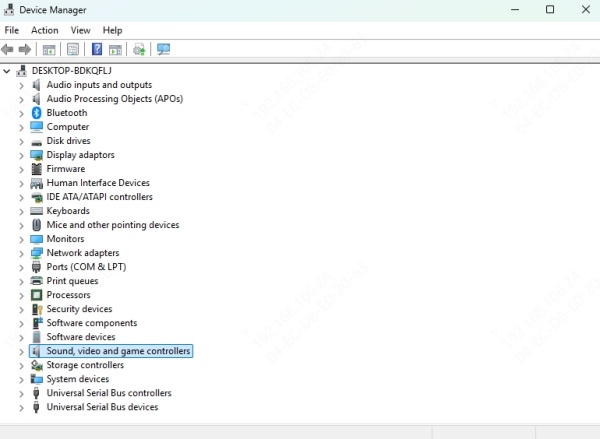
Right-click and choose Update Driver
Or reinstall using Intel’s official audio package
Troubleshooting Common Intel Smart Sound Technology Driver Issues
Here are some quick solutions for frequently reported problems:
| Issue | Solution |
| Microphone not working | Update Digital Microphone driver & OED driver |
| “No Audio Output Device is installed” error | Reinstall SST Audio Controller & OED driver |
| USB headset not detected | Install USB Audio driver for Intel Smart Sound Technology |
| Crackling or distorted audio | Perform clean install of all Intel audio drivers |
| Audio service not responding | Run the Audio Troubleshooter, then update the SST drivers |
Intel(R) Smart Sound Technology: Real-World Applications
Voice Recognition and AI Assistants
Intel SST allows devices to recognize your voice, even when they're asleep. This is what powers "wake word" tech.
Wake-on-Voice Functionality
You can literally wake your PC just by saying a phrase. That’s Intel SST doing its magic.
Audio DSP Use in Laptops and Tablets
It’s especially useful in ultrabooks, 2-in-1 tablets, and convertibles where battery life and size are optimized.
FAQs about Intel Smart Sound Technology Driver
1. Can I disable Intel Smart Sound Technology?
Yes, but disabling it may break microphone input or voice commands. It’s best left enabled unless troubleshooting.
2. Is Intel SST required for audio to work?
On newer systems—yes. Especially for features like noise cancellation and voice activation.
3. Is Intel SST a virus or bloatware?
Not at all. It's a legitimate driver by Intel and essential for many modern audio features.
4. Why does the Intel SST driver keep reinstalling itself?
Windows Update might automatically reinstall it if it detects it's missing. That’s normal behavior.
5. What’s the difference between Intel SST and Realtek audio?
Intel SST manages the DSP and low-level processing, while Realtek is often your primary sound card.
Conclusion
Installing the correct Intel Smart Sound Technology driver for Windows 11 is essential for optimal audio performance, especially for systems relying on voice commands, digital microphones, or USB audio peripherals. Whether you're fixing broken audio features or preparing your PC for high-quality communication, having the latest drivers ensures stability and functionality.
Use a reliable tool like Driver Talent X to automate the process and eliminate guesswork. Don’t let outdated drivers disrupt your experience—update today for seamless audio on your Windows 11 device.
